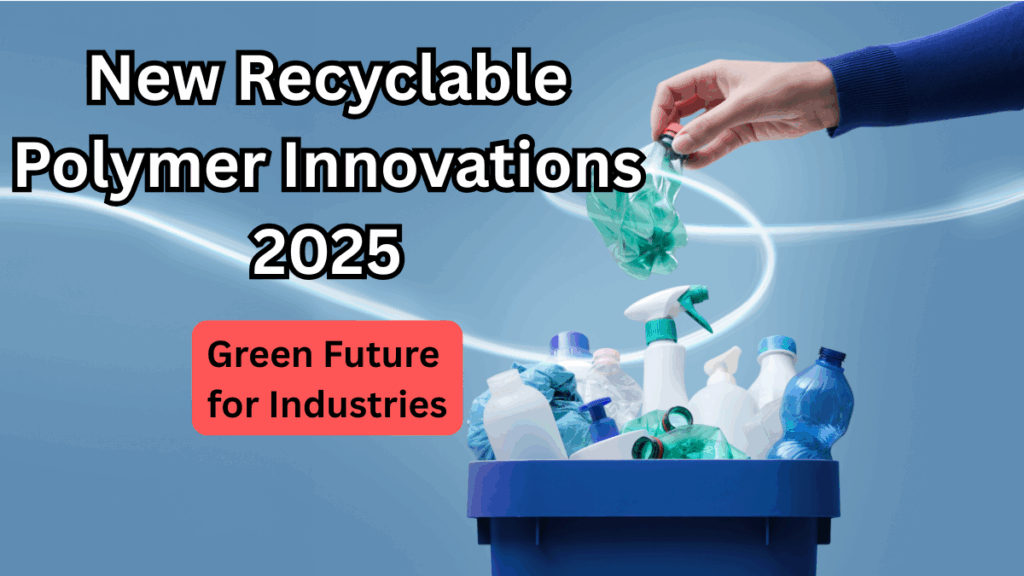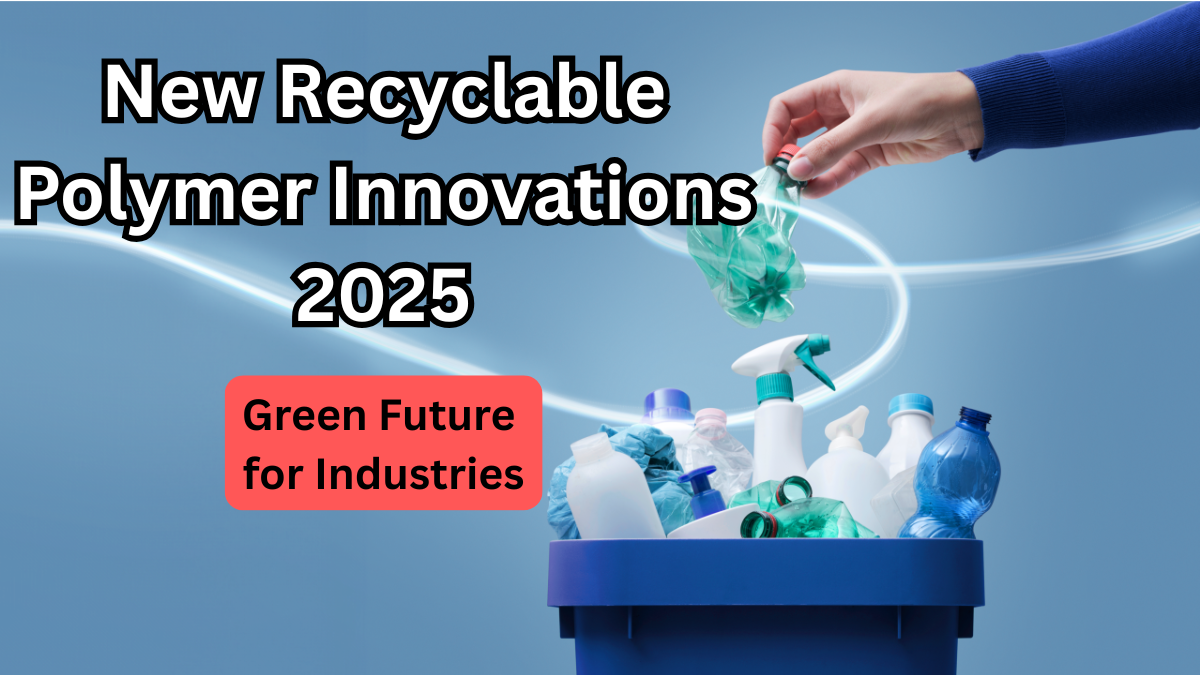The push toward sustainable manufacturing is stronger than ever in 2025. Industries worldwide are exploring recyclable plastics and advanced polymer technologies to reduce environmental impact and build an eco-friendly future. These innovations are not only transforming manufacturing but also reshaping how consumers interact with everyday products.

Why Recyclable Plastics Matter in 2025
With plastic pollution reaching alarming levels, businesses are now prioritizing eco-friendly manufacturing methods. Recyclable plastics provide a sustainable alternative that can significantly reduce waste in landfills and oceans.
Key benefits of recyclable polymers include:
-
Reduction in carbon footprint compared to traditional plastics
-
Enhanced durability while being environmentally safe
-
Cost-effectiveness for large-scale production
-
Support for circular economy initiatives
Cutting-Edge Polymer Innovations
Researchers and companies are developing new types of polymers that are easier to recycle and degrade faster in natural environments. Some standout innovations in 2025 include:
-
Bio-based polymers: Made from renewable sources like cornstarch or algae
-
Self-healing plastics: Reduce the need for replacements and extend product lifespan
-
Chemical recycling polymers: Can be broken down into their original monomers for reuse
-
Hybrid composites: Combine strength with recyclability for industrial applications
Industry Applications of Recyclable Plastics
The versatility of these new polymers is opening doors across multiple sectors. Here’s how industries are leveraging them:
| Industry | Application | Benefit |
|---|---|---|
| Packaging | Bottles, containers, wrapping | Reduces single-use plastic waste |
| Automotive | Interior panels, bumpers | Lighter, recyclable, and durable |
| Electronics | Housings, components | Easy to recycle and eco-friendly |
| Construction | Insulation, pipes | Reduces environmental footprint |
Eco-Friendly Manufacturing – A Step Forward
The rise of eco-friendly manufacturing is closely linked to these polymer innovations. Companies are adopting sustainable practices such as:
-
Using renewable energy in production lines
-
Implementing closed-loop recycling systems
-
Reducing chemical additives in plastics
-
Encouraging consumer participation in recycling programs
By integrating recyclable plastics into manufacturing, businesses are not only lowering emissions but also appealing to eco-conscious consumers who value sustainability.
Looking Ahead: A Green Industrial Future
The future of industries lies in innovation that balances performance with environmental responsibility. Recyclable plastics and eco-friendly manufacturing methods in 2025 are more than trends—they are essential steps toward a sustainable planet. Industries embracing these solutions today are poised to lead in both environmental stewardship and market growth.
FAQs on Recyclable Polymer Innovations 2025
Q1: What are recyclable plastics, and how do they differ from regular plastics?
A1: Recyclable plastics are materials that can be processed and reused multiple times without losing their integrity, unlike traditional plastics, which often end up in landfills after a single use.
Q2: Which industries benefit most from eco-friendly manufacturing?
A2: Industries like packaging, automotive, electronics, and construction are seeing significant benefits, including reduced waste, lower emissions, and improved sustainability.
Q3: Are recyclable plastics more expensive than conventional plastics?
A3: Initially, recyclable plastics may have slightly higher production costs, but long-term benefits such as reuse, waste reduction, and regulatory incentives make them cost-effective.
Q4: How can consumers support recyclable polymer innovations?
A4: Consumers can help by choosing products made from recyclable plastics, properly disposing of plastics for recycling, and supporting companies that follow eco-friendly manufacturing practices.
Click here to learn more
